A&P Part One Exam Study Set
5.0(1)
Card Sorting
1/75
Study Analytics
Name | Mastery | Learn | Test | Matching | Spaced |
|---|
No study sessions yet.
76 Terms
1
New cards
#1
Skull
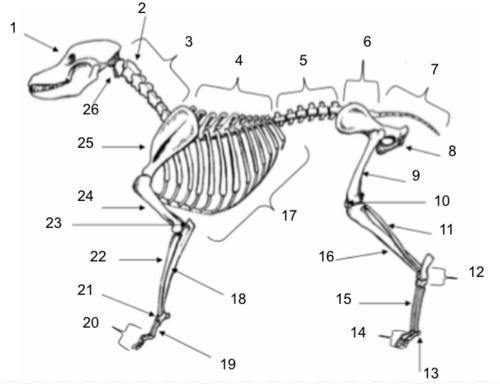
2
New cards
#2
Axis
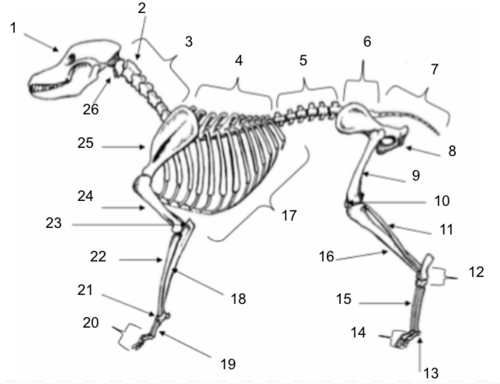
3
New cards
#3
Cervical Vertebrae
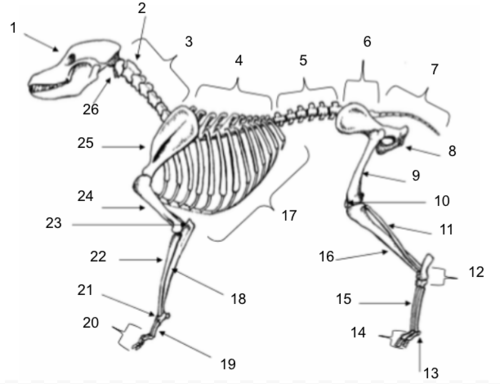
4
New cards
#4
Thoracic Vertebrae
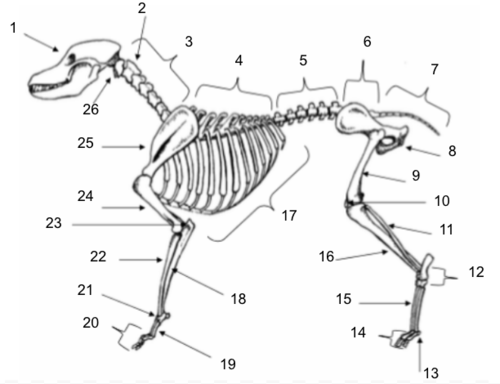
5
New cards
#5
Lumbar Vertebrae
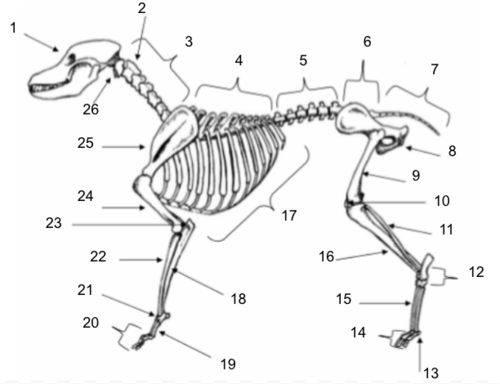
6
New cards
#6
Sacral Vertebrae
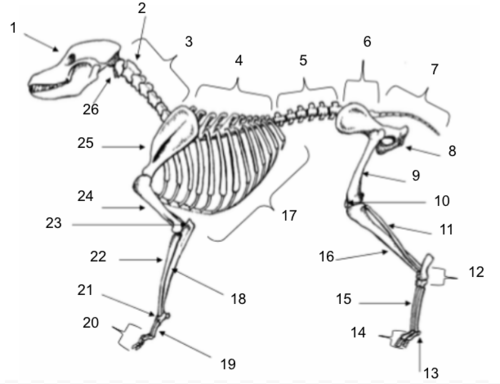
7
New cards
#7
Coccygeal Vertebrae
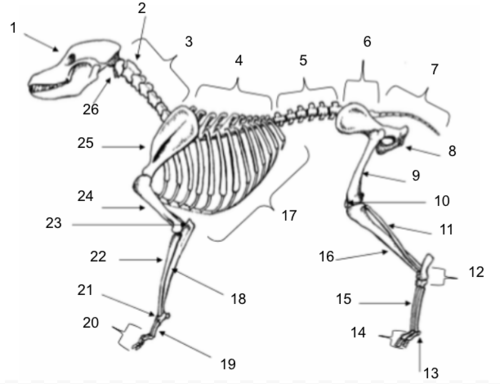
8
New cards
#8
Pelvis
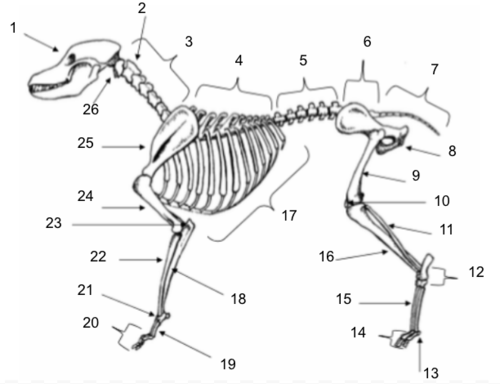
9
New cards
#9
Femur
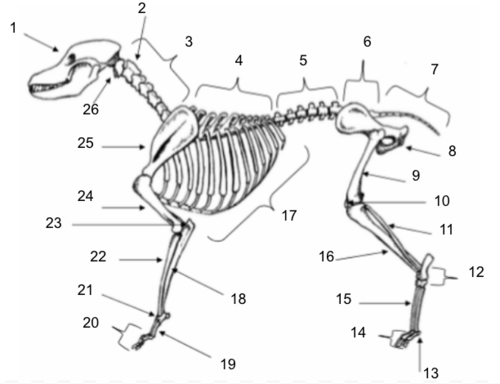
10
New cards
#10
Patella
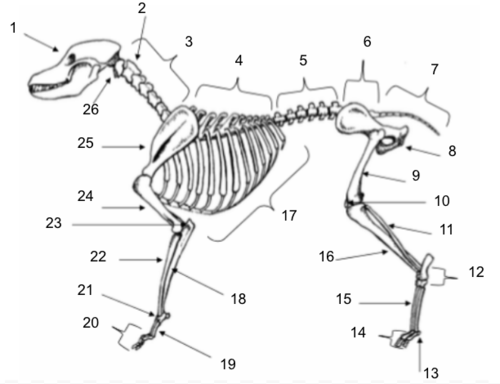
11
New cards
#11
Fibula
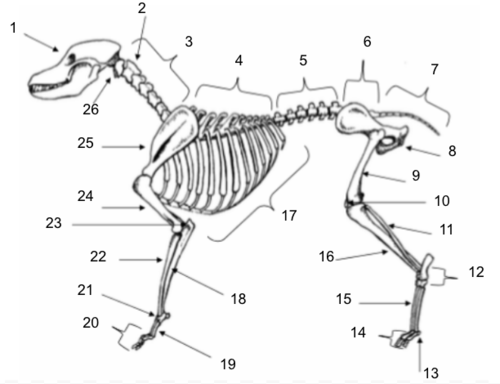
12
New cards
#12
Tarsals
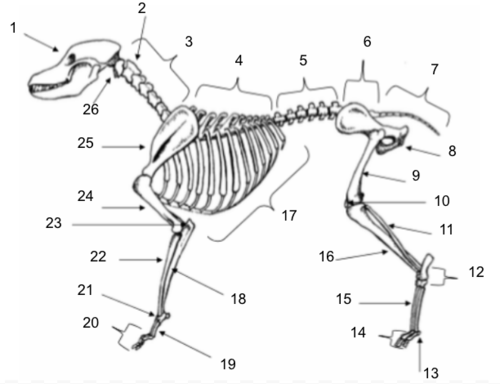
13
New cards
#13
Sesamoids
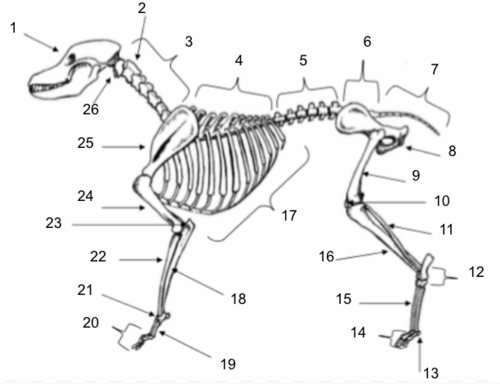
14
New cards
#14
Phalanges
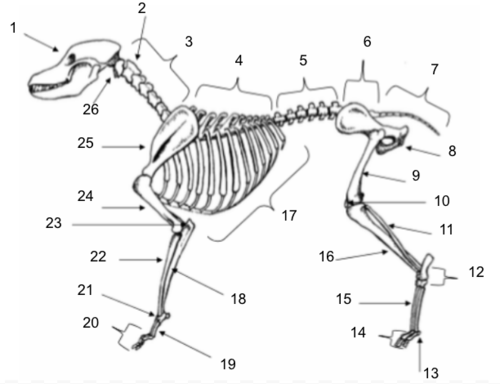
15
New cards
#15
Metatarsals

16
New cards
#16
Tibia
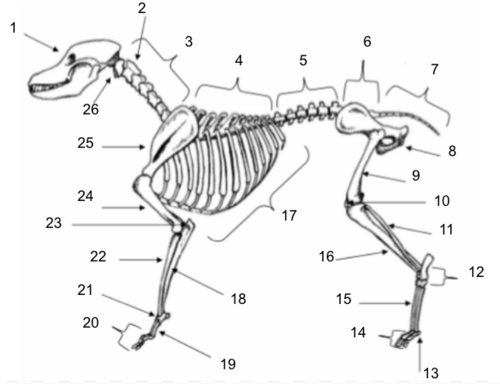
17
New cards
#17
Ribs

18
New cards
#18
Ulna
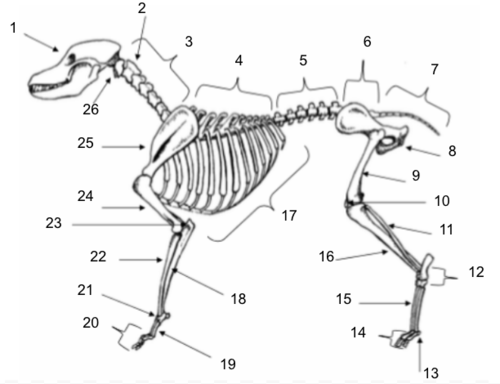
19
New cards
#19
Metacarpals
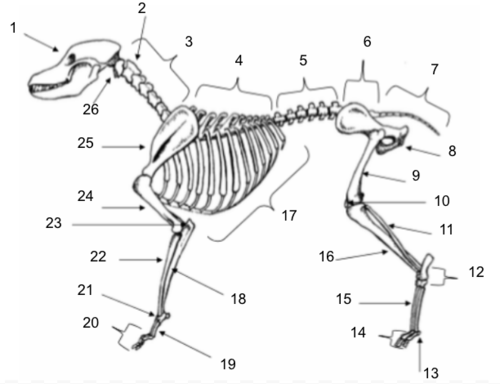
20
New cards
#20
Phalanges
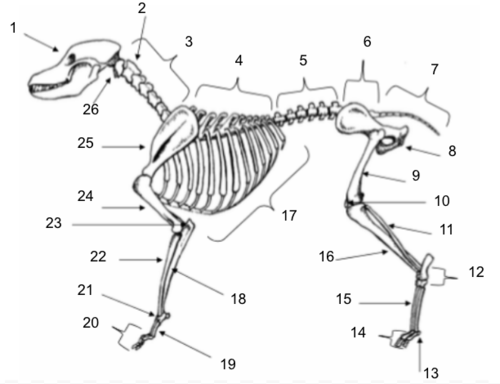
21
New cards
#21
Carpals
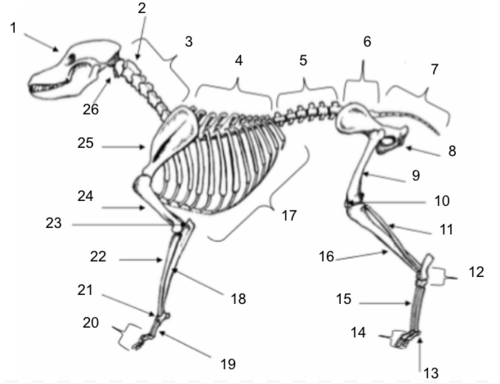
22
New cards
#22
Radius

23
New cards
#23
Olecranon
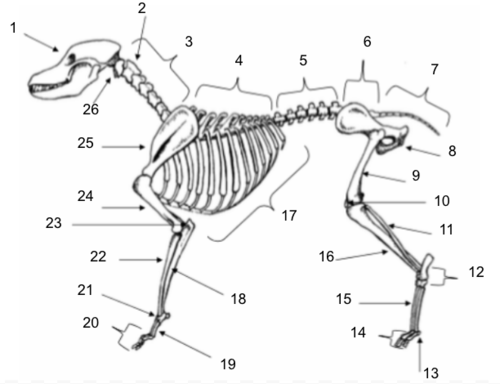
24
New cards
#24
Humerus
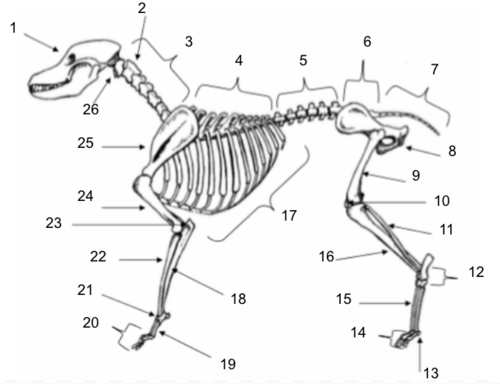
25
New cards
#25
Scapula
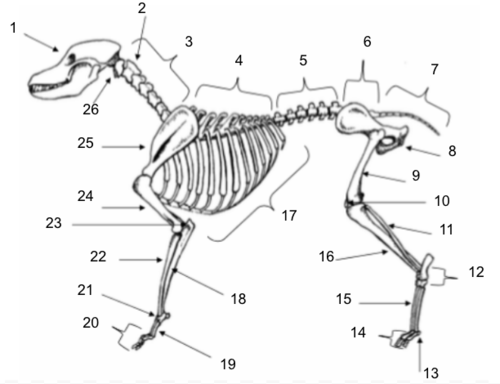
26
New cards
#26
Atlas

27
New cards
#1
Esophagus
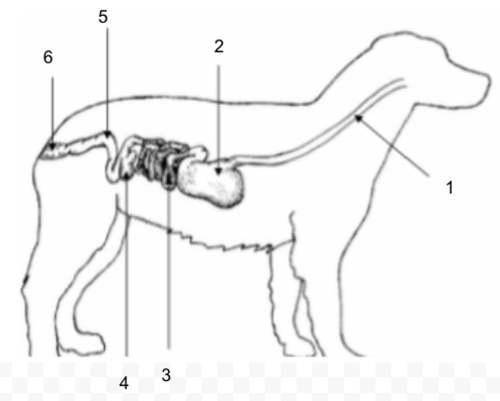
28
New cards
#2
Stomach
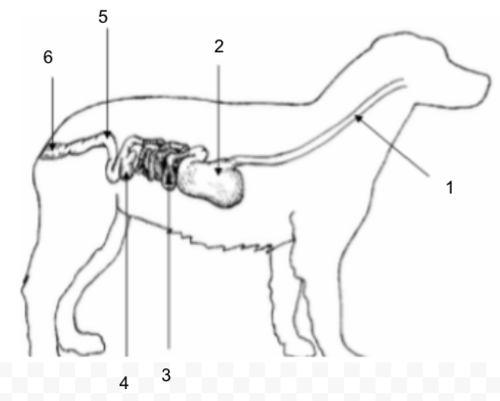
29
New cards
#3
Small Intestine
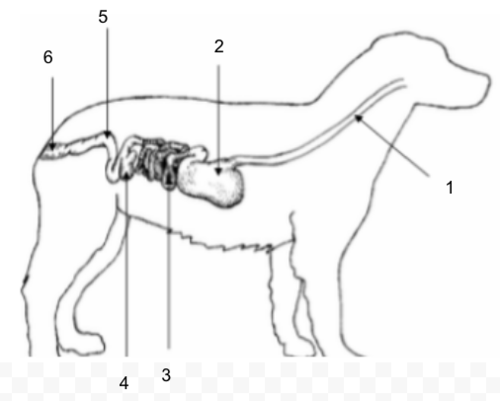
30
New cards
#4
Cecum

31
New cards
#5
Large Intestine (Colon)

32
New cards
#6
Rectum
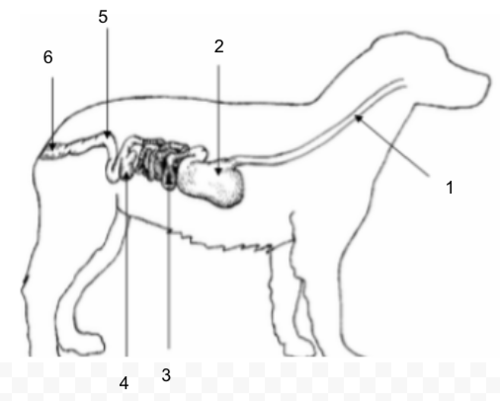
33
New cards
#1
Esophagus
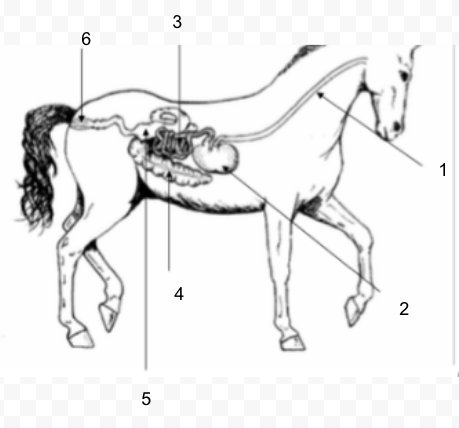
34
New cards
#2
Stomach
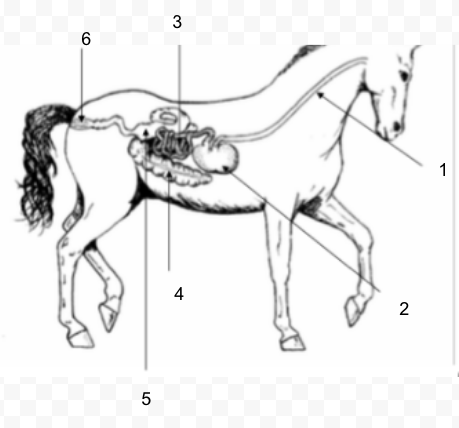
35
New cards
#3
Small Intestine
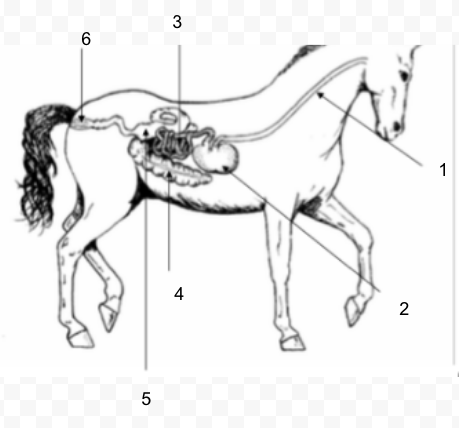
36
New cards
#4
Cecum
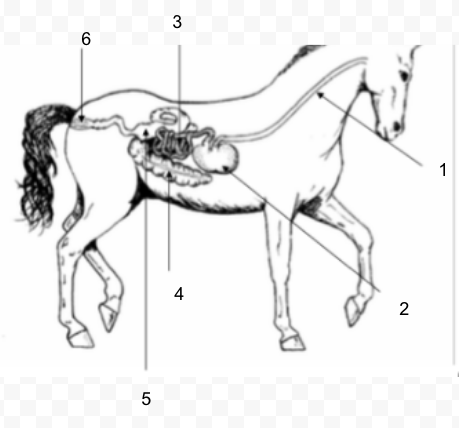
37
New cards
#5
Large Intestine (Colon)
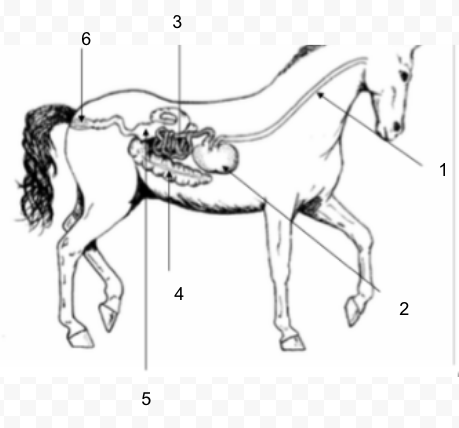
38
New cards
#6
Rectum
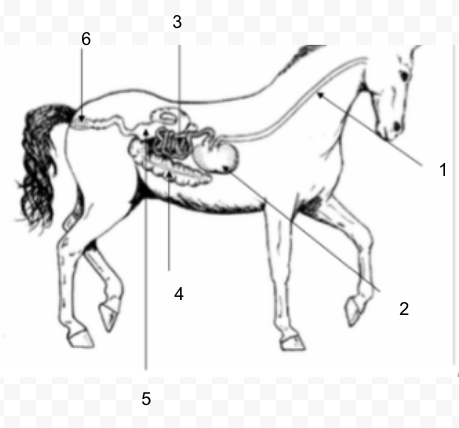
39
New cards
#1
Esophagus
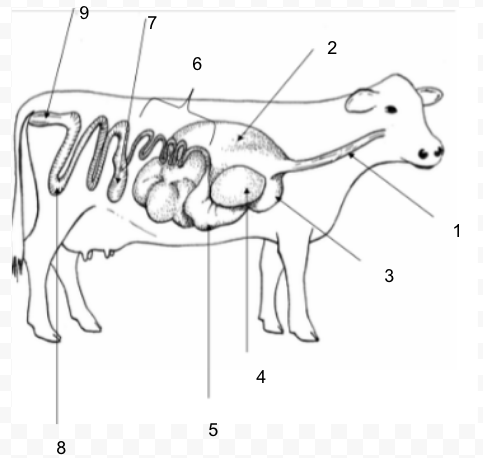
40
New cards
#2
Rumen
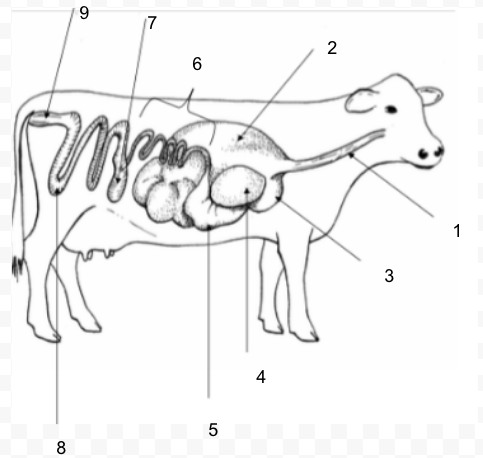
41
New cards
#3
Reticulum
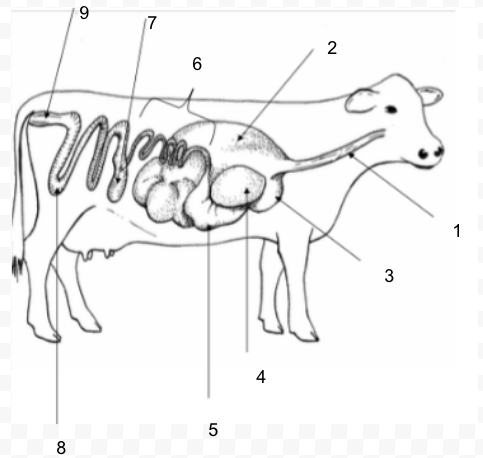
42
New cards
#4
Omasum

43
New cards
#5
Abomasum
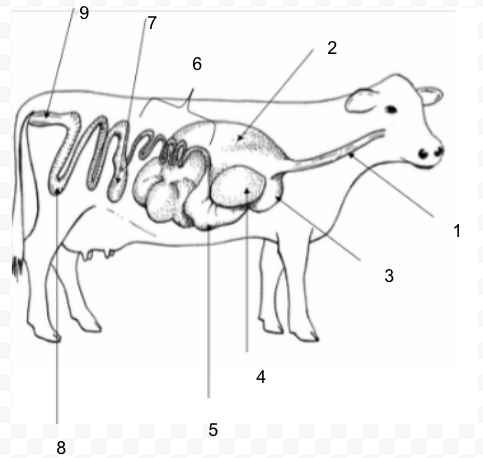
44
New cards
#6
Small Intestine
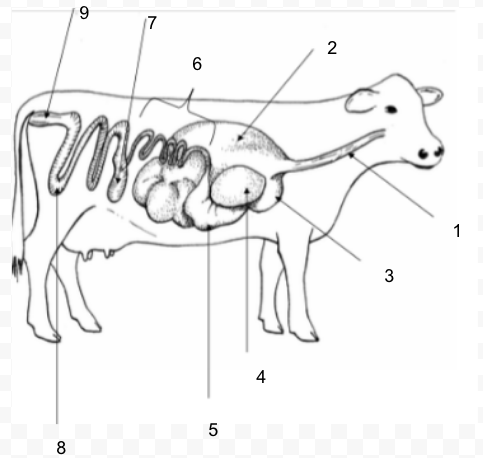
45
New cards
#7
Cecum

46
New cards
#8
Large Intestine (Colon)
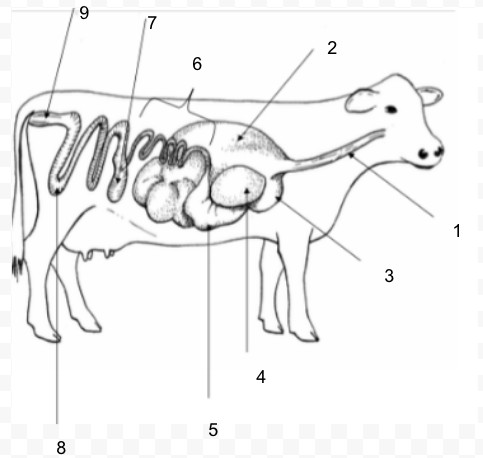
47
New cards
#9
Rectum
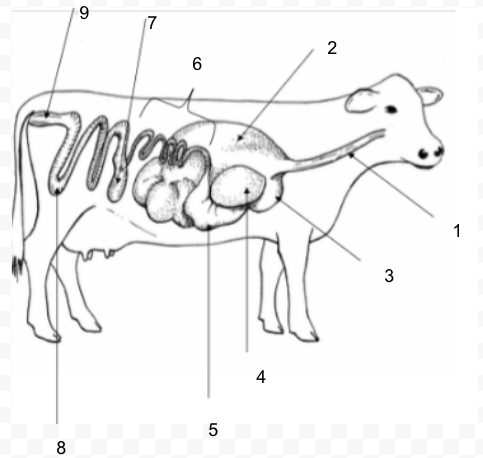
48
New cards
#1
Epiphysis
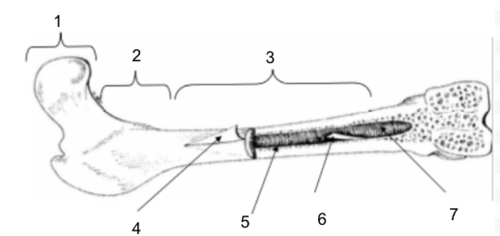
49
New cards
#2
Metaphysis
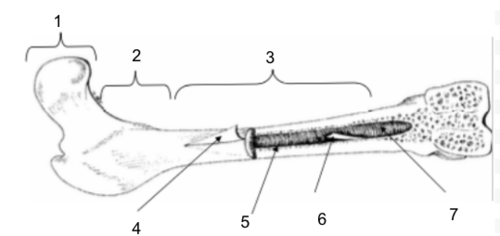
50
New cards
#3
Diaphysis
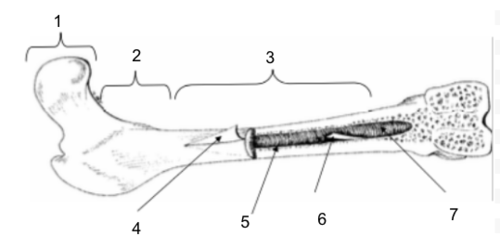
51
New cards
#4
Periosteum

52
New cards
#5
Bone Marrow

53
New cards
#6
Endosteum
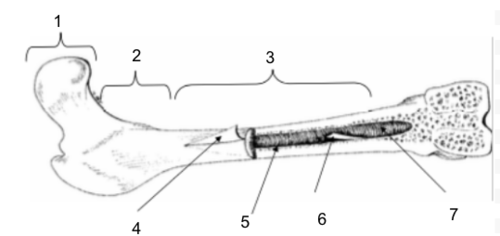
54
New cards
#7
Medullary Cavity
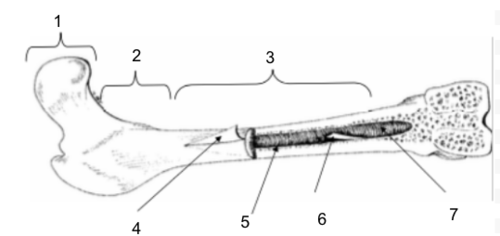
55
New cards
List and describe the three types of digestive systems.
Ruminant: four compartment stomach: rumen, reticulum, omasum, abomasum - can digest roughages
Monogastric: simple single chambered stomach; cannot digest roughages
Cecal Fermenters: simple single chambered stomach; can digest roughages because of the presence of a cecum.
Monogastric: simple single chambered stomach; cannot digest roughages
Cecal Fermenters: simple single chambered stomach; can digest roughages because of the presence of a cecum.
56
New cards
What are the three parts of the Skeletal System? (I.e. Types of Tissues)
Bones, Cartilage, and Ligaments
57
New cards
What are two functions of the Skeletal System?
Gives structure and support to the body
Protects the internal organs
Makes locomotion and movement possible
Protects the internal organs
Makes locomotion and movement possible
58
New cards
Which two bones or groups of bones are part of the axial skeleton?
Skull and Spine
59
New cards
Which two bones or groups of bones are parts of the appendicular skeleton?
Forelimbs and Hindlimbs
60
New cards
Rumen
fermentation vat; microorganisms break down food
61
New cards
Reticulum
honeycomb; foreign material collects here
62
New cards
Omasum
manyplies; absorbs water and decreases particle size
63
New cards
Abomasum
true stomach; secretes enzymes
64
New cards
Small Intestine
absorption of carbohydrates, lipids, and proteins
65
New cards
Large Intestine (Colon)
water absorption; mucus addition
66
New cards
Mechanical Digestion
food is chewed and broken down into smaller pieces
67
New cards
Peristalsis
muscular contractions; move food through system
68
New cards
Chemical Digestion
enzymes and acids reduce particle size
69
New cards
Absorption
nutrients move from digestive tract to bloodstream
70
New cards
Metabolism
removes nutrients from the bloodstream
71
New cards
Comminuted Fracture
bone shatters into many pieces
72
New cards
Compound Fracture
bone breaks through the skin
73
New cards
Fissure Fracture (hairline)
break along the long axis of the bone
74
New cards
Greenstick Fracture
break on one side of the bone; due to bending force
75
New cards
Simple Fracture
bone does not break through the skin
76
New cards
Transverse Fracture
break completely across the bone